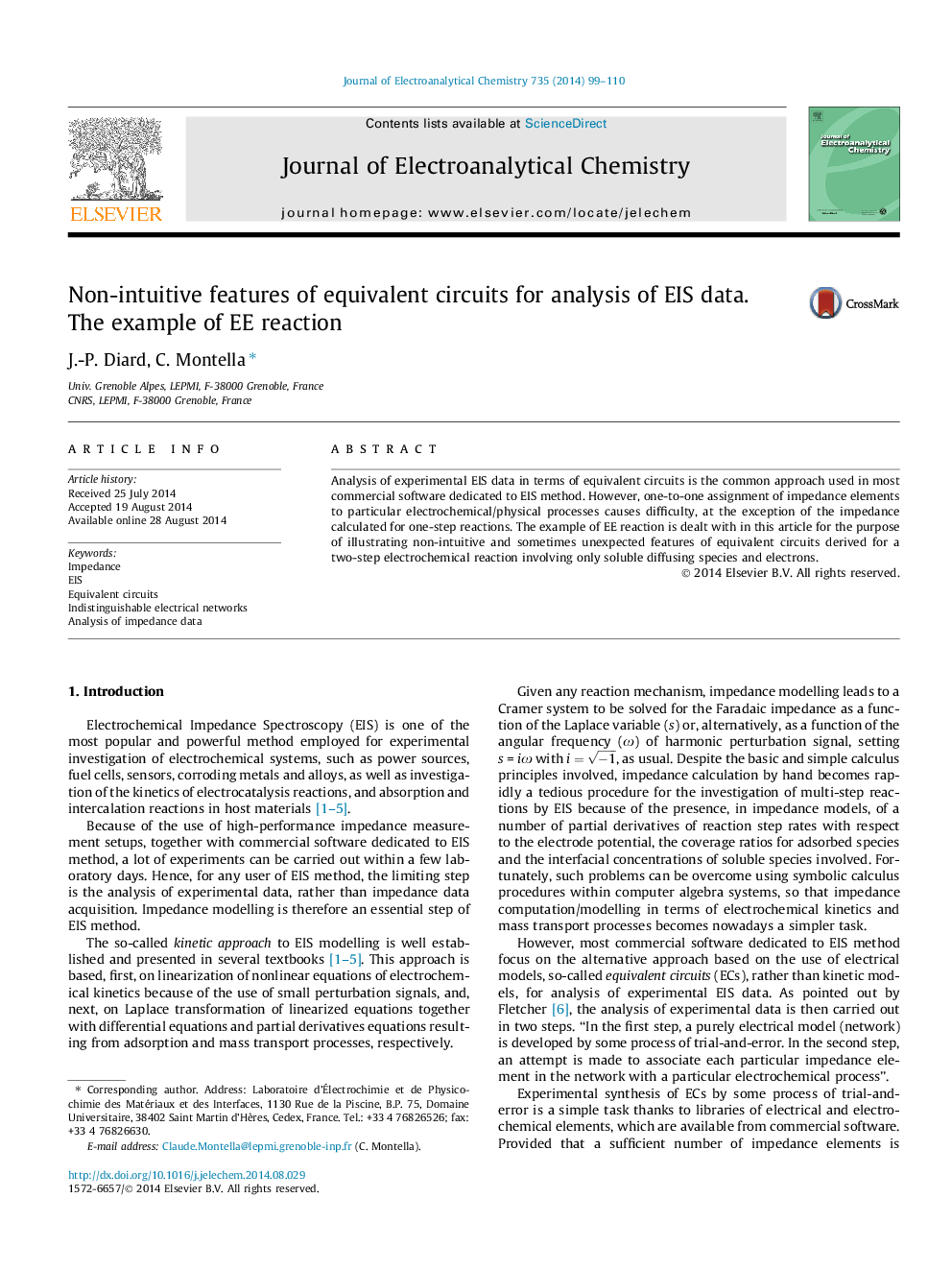| Article ID | Journal | Published Year | Pages | File Type |
|---|---|---|---|---|
| 218621 | Journal of Electroanalytical Chemistry | 2014 | 12 Pages |
•Derivation of the general structure of Faradaic impedance (Zf) for EE reaction.•Four indistinguishable equivalent circuits exhist for Zf, at equilibrium, when D1 = D2 = D3.•The concept of coupling impedance is applied to Zf, at equilibrium, when D1 ≠ D2 ≠ D3.•The Faradaic impedance may exhibit inductive features away from equilibrium.•Illustration of limitations due to the equivalent-circuits approach to EIS.
Analysis of experimental EIS data in terms of equivalent circuits is the common approach used in most commercial software dedicated to EIS method. However, one-to-one assignment of impedance elements to particular electrochemical/physical processes causes difficulty, at the exception of the impedance calculated for one-step reactions. The example of EE reaction is dealt with in this article for the purpose of illustrating non-intuitive and sometimes unexpected features of equivalent circuits derived for a two-step electrochemical reaction involving only soluble diffusing species and electrons.
